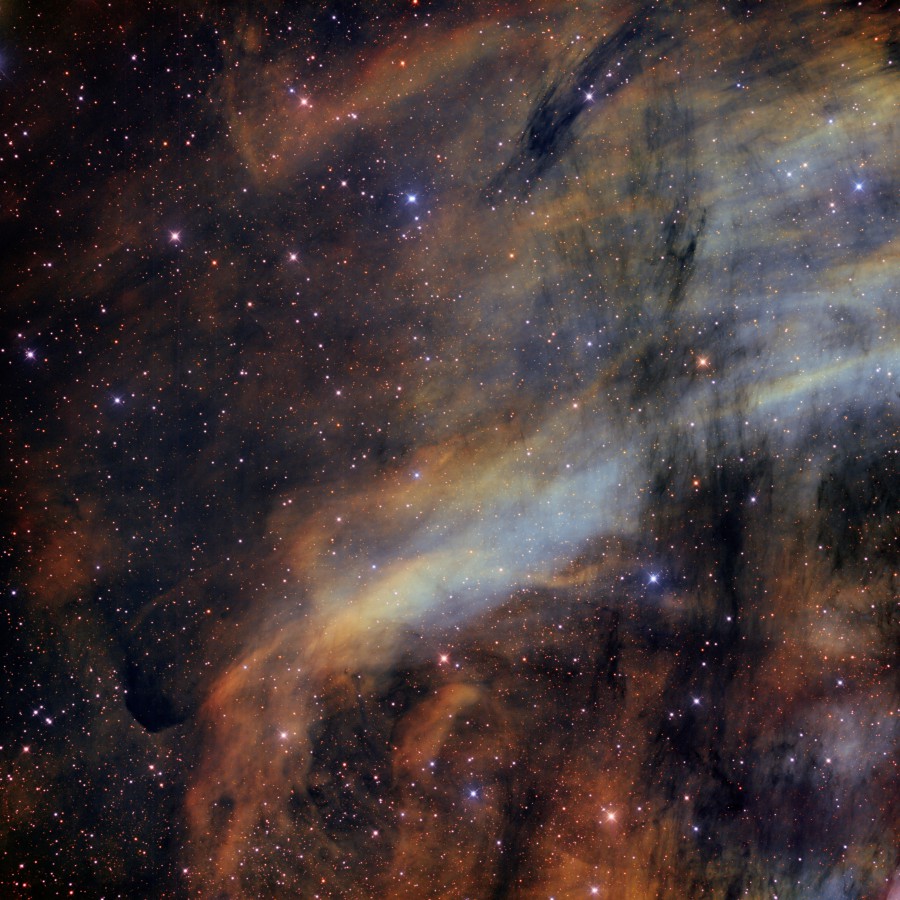SNR-G083.0.00.2 – LDN915 – IC5068 en SHO
Données techniques
Données techniques de prise de vue
Common name :
Date : du 8 juillet au 3 aout-2019
Optics : Newton SV400 F3,8
FWHM : 2.01 à 3.48
CCD : FLI Proline 16803
Guider : Atik 414L+
Filtres : Astrodon SII-Ha-OIII-RGB
Resolution ………….. 1.154 arcsec/px
Rotation ……………. 0.658 deg
Focal distance ………. 1609.29 mm
Pixel size ………….. 9.00 um
Field of view ……….. 1d 18′ 44.9″ x 1d 18′ 44.9″
Image center ………… RA: 20 47 30.390 Dec: +42 46 25.83
Total time :22h50
20 x 5′ en B
20 x 5′ en V
20 x 5′ en R
SII 33 x 10m
Ha 38 x 10m
OIII 34 x 10m
Données scientifiques
Source D.A. Green Catalog
| RA: 20h46m55s Dec: +42◦52′ Radio: Incomplete shell. |
1-GHz flux/Jy: 1 Spectral index: 0.4 |
Size/arcmin: 9×7
Type: S
References:
Kothes et al. 2006, A&A, 457, 1081. CGPS at 408 MHz (∼
3′ : S = 1.2±0.3 Jy) and 1420 MHz (∼ 1′ : S = 0.8±0.1 Jy,
including polarisation and review of flux densities. G83.0-0.3
Polarization properties of the supernova remnants. The polarized intensity was corrected for noise bias (see text Sect. 3.2). The peak polarization in Col. 4 is an approximate value. SNRs with no detectable polarization were removed from the table.
G83.0-0.3 is listed by Green (2004) as a possible SNR originally reported by Taylor et al. (1992). No study since then has confirmed its non-thermal nature. It has the structure of a shell of small angular size (Fig. 2). It lies within the confusing and highly structured background of Cygnus X, and sits atop a filament of thermal continuum emission. A single, flat-spectrum point source is within the remnant’s boundary, and after removing its flux, we integrated 408, 1420, and 2695 MHz (11 cm Effelsberg Survey, Fürst et al. 1990) data and used the point source corrected 327 MHz value from Taylor et al. (1992) to confirm a non-thermal spectrum for G83.0-0.3 (Fig. 8). Taylor et al. (1992) measured a flux at 4850 MHz from the Green Bank survey (Condon et al. 1989). However, in these data we find that the aforementioned thermal background dominates, and one cannot extract a reasonable flux for the SNR alone due to the low resolution of the data.
